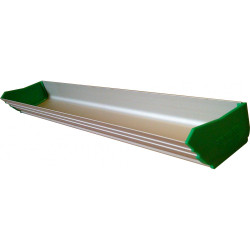Screen Printing Emulsion – The Key to Sharp and Detailed Prints
For professional-quality screen printing, a high-performance screen printing emulsion is essential. This light-sensitive liquid coating is applied to a screen to create a stencil, allowing for precise and detailed designs. Whether you’re printing on fabric, paper, or other materials, the right emulsion ensures sharp edges, clean details, and a smooth production process. From beginners to advanced printers, choosing the right emulsion can make all the difference in achieving high-quality, durable prints.
Why Use Screen Printing Emulsion?
A properly applied and cured emulsion is the foundation of any successful screen printing project. It determines the sharpness of the design, the durability of the stencil, and how many prints you can achieve before needing to reclaim the screen. Here’s why a quality screen printing emulsion is a must-have for any screen printer:
1. Sharp and Precise Designs
Screen printing emulsion creates a crisp stencil that allows for detailed, intricate artwork. Whether you’re printing fine lines, small text, or bold graphics, the right emulsion ensures every detail is transferred accurately to your material.
2. Strong Durability for Long Print Runs
A high-quality screen printing emulsion is designed to withstand multiple prints without breaking down. This means you can produce more prints per screen, increasing efficiency and reducing downtime. Some emulsions are even formulated for extended durability, making them perfect for high-volume commercial printing.
3. Compatibility with Different Inks and Exposure Methods
Not all emulsions work with every ink type, so selecting the right one for your project is essential. Some emulsions are specifically designed for plastisol inks, while others are compatible with water-based and discharge inks. Additionally, emulsions come in different formulations for use with various exposure units, including LED, UV, and halogen light sources.
4. Easy Application and Reclaiming
Screen printing emulsions vary in thickness and drying time, but most are easy to apply with a scoop coater and can be reclaimed after use. Using the correct reclaiming chemicals allows screens to be cleaned and reused, saving time and money.
Types of Screen Printing Emulsion
Choosing the right screen printing emulsion depends on your ink type, exposure setup, and printing needs. Here are the main types available:
Diazo Emulsion
- Ideal for beginners due to its forgiving nature.
- Requires mixing with a diazo activator before use.
- Longer exposure time but excellent durability.
- Works well with plastisol and water-based inks.
Photopolymer (SBQ) Emulsion
- Fast-exposing emulsion, ideal for high-production environments.
- Pre-sensitized, eliminating the need for mixing.
- Best suited for plastisol inks and works well with LED exposure units.
Dual-Cure Emulsion
- A combination of diazo and photopolymer emulsions, offering the best of both worlds.
- Provides superior durability and sharp image resolution.
- Works with plastisol, water-based, and discharge inks.
How to Use Screen Printing Emulsion for Best Results
- Coating the Screen – Apply a smooth, even layer of emulsion on both sides of a clean, degreased screen using a scoop coater.
- Drying – Allow the screen to dry in a dark, dust-free environment with proper airflow. A drying rack or horizontal position ensures even drying.
- Exposure – Use a properly calibrated exposure unit to harden the emulsion. The exposure time depends on the type of emulsion and light source.
- Rinsing and Developing – After exposure, rinse the screen with water to reveal the design. A properly exposed screen will retain fine details without breaking down.
- Printing – Once dry, the screen is ready for ink application and printing.
- Reclaiming – After printing, remove the emulsion with a reclaiming solution so the screen can be reused for future designs.
Get the Best Screen Printing Emulsion for Your Projects
Whether you’re a small business, a DIY printer, or a large-scale operation, choosing the right screen printing emulsion is key to achieving professional results. With a variety of emulsions designed for different inks and exposure methods, you can find the perfect solution for your printing needs. Browse our selection of high-quality emulsions today and take your screen printing to the next level!
Screen Printing Ink – The Key to Bold and Long-Lasting Prints
When it comes to creating vibrant, durable designs, screen printing ink is an essential component of the printing process. Whether you're working with plastisol, water-based, or discharge inks, choosing the right formula ensures bold colors, sharp details, and a smooth application on various fabrics. Plastisol ink is the industry favorite for its high opacity and longevity, while water-based inks offer a softer feel and eco-friendly benefits. No matter your printing needs, high-quality screen printing ink guarantees professional results that withstand multiple washes without fading or cracking.
Direct Emulsion – The Foundation for Sharp and Durable Screen Prints
For professional-quality screen printing, direct emulsion is a must-have. This light-sensitive liquid coating is applied directly to the screen mesh to create a stencil, allowing printers to achieve precise, high-resolution designs. Whether you're working with plastisol, water-based, or discharge inks, using the right direct emulsion ensures clean edges, strong durability, and a seamless printing process. Unlike capillary films, direct emulsion offers greater flexibility in coating thickness and exposure control, making it ideal for both fine detail and bold graphics. With a properly prepared screen, direct emulsion helps produce long-lasting prints that maintain their clarity and vibrancy over time.














